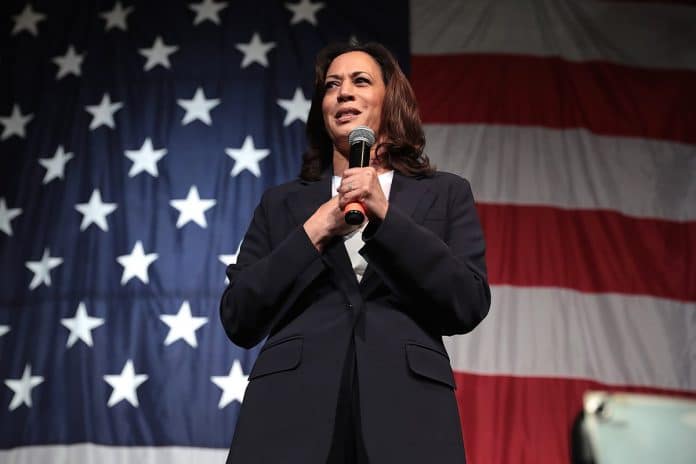When Kamala Devi Harris celebrated her pronounced victory as vice president-elect of the United States in November 2020, she wore a pantsuit of ivory white; a symbolic fashion choice, as it was through the power and collective efforts of the American suffragettes that–100 years ago last year–American women fully and finally earned the right to vote.
Throughout the course of their public protests, the suffragettes wore white dresses. And in the years that have followed, many businesswomen have adopted the pantsuit as a practical and powerful form of business apparel. In 2008, Hillary Clinton marked the 88th anniversary of women earning the right to vote by acknowledging her ‘sisterhood of the traveling pantsuits’ who continue to break new ground and fight for women’s rights.
Kamala Harris, a former attorney, attorney general, senator, and presidential candidate, is the first successful female candidate to win the position of vice president of the United States. Yet the road to Kamala goes back more than a century–and, as might be expected, it began with a suffragette.
The Center for American Women and Politics reports that suffragette Marietta Stow was the inaugural woman to run for vice president in 1884, sharing the banner of the Equal Rights Party with sister suffragette Belva Lockwood. And in 1924, Lena Springs was the first woman to be named a vice-presidential candidate at a United States major-party political convention, at the 1924 Democratic National Convention.
The Road to Kamala is lined with women of all colors, creeds, and faiths–and, for that matter, various political parties. CAWP tells us that the first Black woman nominee for vice president was Charlotta Spears Bass, who ran on the Progressive Party ticket. Texas legislator Frances “Sissy” Farenthold was nominated for vice president by none other than legendary feminist activist Gloria Steinem, at the 1972 Democratic National Convention. Toni Nathan, a Libertarian, made history in 1972 as the first female to earn an electoral vote for vice president. In 1980, LaDonna Harris was the first Native American woman nominee for vice president, running on the Citizens Party ticket.
Geraldine Ferraro today is honored as the first woman vice-presidential nominee of a major U.S. party, thusly named at the 1984 Democratic National Convention. Although this veteran Representative passed away in 2011, her daughter Donna Zaccaro has given several recent interviews in support of Kamala Harris.
Emma Wong Mar, the first Asian American woman nominee for vice president, ran on the Peace and Freedom Party ticket in 1984. Winona LaDuke twice ran for vice president on the Green Party ticket, and in 2000 garnered a larger percentage of that year’s vote than any other third-party woman candidate for vice president.
In the Republican Party, Sarah Palin is noted as the second woman vice-presidential nominee representing a major party and the first Republican woman nominee for the vice presidency. And in 2016, executive Carly Fiorina ran for president and vice president at different times in a single race.
On Inauguration Day, 2021, the day belonged to President Joseph Biden. Yet one could not ignore the mighty feminine energy flowing freely throughout the United States Capitol. Kamala Harris, the first Female, Black, and South Asian Vice President of the United States, was sworn in by Sonia Sotomayor, Associate Justice of the Supreme Court of the United States; the first Hispanic and Latina member of the Court as well as the third woman. Watching from the crowd was Hillary Clinton, the first female presidential candidate to represent a major party, Dr. Jill Biden, the first First Lady who fully intends to continue working during her husband’s term in office, continuing her role as an educator, and Karen Pence–the outgoing Second Lady who herself continued her art and teaching careers while her husband Mike Pence served as vice president. Speaker of the House Nancy Pelosi presented a flag to the new President.
Of course, the history of women running for president–an illustrious list that includes Hillary Clinton, Shirley Chisholm, Sen. Elizabeth Warren, Elizabeth Dole, suffragette Victoria Woodhull, and many others, deserves its own historical essay. And on that day, not far in the future, when we welcome the first woman president into the Oval Office, this reporter very much looks forward to writing that essay as well. Until then, as legendary First Lady, Abigail Adams wrote to her husband, then-President John Adams, “Remember the ladies.”

